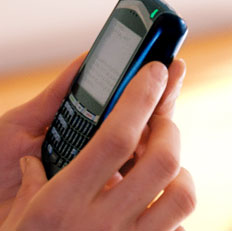The increasing mobility of the consumer is a good development for any business, but it is especially good for quick-service and fast-casual restaurants. Snap decisions about where to eat often happen spontaneously, and quick serves are uniquely positioned to serve the needs of these consumers. Marketing to a constantly on-the-go consumer is like trying to hit a moving target. Fortunately, restaurants can use direct digital marketing strategies to reach active consumers wherever they are.
Direct digital marketing is an addressable marketing method where relevant marketing communications are delivered to individuals through the e-mail, Web, and mobile channels using an e-mail address, a Web browser cookie, and a mobile phone number. The principles of direct digital marketing—addressability, message relevance, and personalization—are ideal for restaurant marketers and their customers. Leveraging the full value of direct digital marketing requires going beyond the tried and true e-mail marketing strategies that have been used for the last 10 years and building a strong relationship with a consumer at each touch-point they value.
E-mail marketing is still useful, but it has evolved into more of an informational communications channel. Consumers cannot take immediate action—they cannot make a direct purchase—from an e-mail. While it is true that some consumers now have access to e-mail via a Smartphone, e-mail became a conduit to the more action-oriented channels of mobile (text messaging) and the Web. As a result of e-mail’s role shift, the marketing communications delivered through e-mail must also shift to be more relationship oriented by providing general information about upcoming specials, for example.
While the e-mail channel is informational, the mobile channel facilitates action.
To determine the right way to use the mobile channel for both quick-service and fast-casual restaurant marketing, it is imperative to first understand the various mobile functions that consumers have broadly adopted. Some restaurants provide mobile apps for consumers to place orders, get coupons, and generally interact with the brand. While an iPhone app, for example, can be an effective tool for the restaurant and a valuable asset for the consumer, an iPhone app only reaches a minority of mobile-phone users (about 6 percent of the market has an iPhone). Even the least sophisticated mobile devices have text message capabilities. To maximize reach and impact of any mobile program it is important to use the most common form of non-voice mobile communications: text messaging. Sending text messages containing special short-lived offers or limited-time coupons, and even enabling the placement of an order via mobile, are simple programs for marketers to set up and easy for consumers to use.
Getting the most out of any type of mobile marketing requires an effective approach for capturing the consumer opt-in. Using the traditional marketing channels like television and radio, along with on-location collateral like table tents and counter mats, helps rapidly capture the necessary opt-ins to build a critical mass and maximize the effectiveness of any mobile direct digital marketing program. While the ease and effectiveness of mobile marketing is enticing, remember that saturating a mobile subscriber’s inbox is a quick way to lose a subscriber.
Even though e-mail promotions can be accessed on some mobile devices, they do not have the instant impact of a mobile promotion. For a consumer to get real value from an e-mail coupon they need at least a week to redeem it. A mobile offer can be set to expire hours after delivery, not days. Understanding the distinction consumers make between these two channels is crucial to maximizing opt-ins and getting the most out of what direct digital marketing delivers.
Direct digital marketing—especially through the mobile channel—gives restaurant marketers the power to easily communicate to consumers no matter where they are or what they are doing. Properly implementing effective direct digital marketing programs is a fast and easy way to increase local foot traffic and boost sales with a limited investment.












